第126章 CENTRAL CHILE:--STRUCTURE OF THE CORDILLERA(21)
Sixthly: a volcanic stratum, 250 feet in thickness, of so varying a nature that I do not believe a score of specimens would show all the varieties;much is highly amygdaloidal, much compact; there are greenish, blackish, purplish, and grey varieties, rarely including crystals of green augite and minute acicular ones of feldspar, but often crystals and amygdaloidal masses of white, red, and black carbonate of lime.Some of the blackish varieties of this rock have a conchoidal fracture and resemble basalt;others have an irregular fracture.Some of the grey and purplish varieties are thickly speckled with green earth and with white crystalline carbonate of lime; others are largely amygdaloidal with green earth and calcareous spar.Again, other earthy varieties, of greenish, purplish and grey tints, contain much iron, and are almost half composed of amygdaloidal balls of dark brown bole, of a whitish indurated feldspathic matter, of bright green earth, of agate, and of black and white crystallised carbonate of lime.All these varieties are easily fusible.Viewed from a distance, the line of junction with the underlying semi-porcellanic strata was distinct; but when examined closely, it was impossible to point out within a foot where the lava ended and where the sedimentary mass began: the rock at the time of junction was in most places hard, of a bright green colour, and abounded with irregular amygdaloidal masses of ferruginous and pure calcareous spar, and of agate.
Seventhly: strata, eighty feet in thickness, of various indurated tuffs, as before; many of the varieties have a fine basis including rather coarse extraneous particles; some of them are compact and semi-porcellanic, and include vegetable impressions.
Eighthly: a bed, about fifty feet thick, of greenish-grey, compact, feldspathic lava, with numerous small crystals of opaque feldspar, black augite, and oxide of iron.The junction with the bed on which it rested, was ill defined; balls and masses of the feldspathic rock being enclosed in much altered tuff.
Ninthly: indurated tuffs, as before.
Tenthly: a conformable layer, less than two feet in thickness, of pitchstone, generally brecciated, and traversed by veins of agate and of carbonate of lime: parts are composed of apparently concretionary fragments of a more perfect variety, arranged in horizontal lines in a less perfectly characterised variety.I have much difficulty in believing that this thin layer of pitchstone flowed as lava.
Eleventhly: sedimentary and tufaceous beds as before, passing into sandstone, including some conglomerate: the pebbles in the latter are of claystone porphyry, well rounded, and some as large as cricket-balls.
Twelfthly: a bed of compact, sonorous, feldspathic lava, like that of bed No.8, divided by numerous joints into large angular blocks.
Thirteenthly: sedimentary beds as before.
Fourteenthly: a thick bed of greenish or greyish black, compact basalt (fusing into a black enamel), with small crystals, occasionally distinguishable, of feldspar and augite: the junction with the underlying sedimentary bed, differently from that in most of the foregoing streams, here was quite distinct:--the lava and tufaceous matter preserving their perfect characters within two inches of each other.This rock closely resembles certain parts of that varied and singular lava-stream No.6; it likewise resembles, as we shall immediately see, many of the great upper beds on the western flank and on the summit of this range.
The pile of strata here described attains a great thickness; and above the last-mentioned volcanic stratum, there were several other great tufaceous beds alternating with submarine lavas, which I had not time to examine; but a corresponding series, several thousand feet in thickness, is well exhibited on the crest and western flank of the range.Most of the lava-streams on the western side are of a jet-black colour and basaltic nature;they are either compact and fine-grained, including minute crystals of augite and feldspar, or they are coarse-grained and abound with rather large coppery-brown crystals of an augitic mineral.(Very easily fusible into a jet-black bead, attracted by the magnet: the crystals are too much tarnished to be measured by the goniometer.) Another variety was of a dull-red colour, having a claystone brecciated basis, including specks of oxide of iron and of calcareous spar, and amygdaloidal with green earth: there were apparently several other varieties.These submarine lavas often exhibit a spheroidal, and sometimes an imperfect columnar structure: their upper junctions are much more clearly defined than their lower junctions;but the latter are not so much blended into the underlying sedimentary beds as is the case in the eastern flank.On the crest and western flank of the range, the streams, viewed as a whole, are mostly basaltic; whilst those on the eastern side, which stand lower in the series, are, as we have seen, mostly feldspathic.